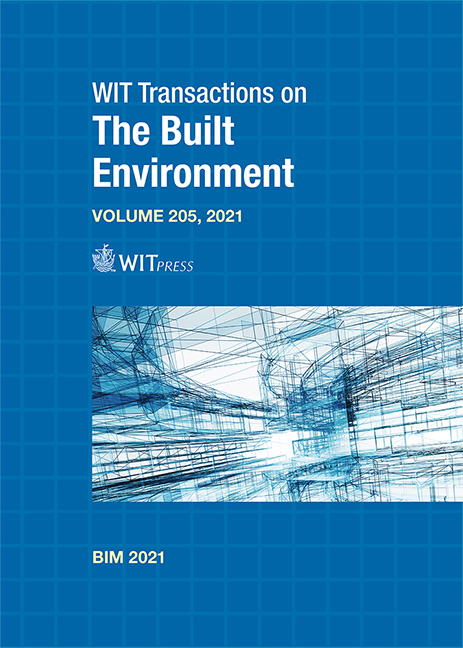TOWARDS SUSTAINABLE BUILDINGS USING BUILDING INFORMATION MODELLING AS A TOOL FOR INDOOR ENVIRONMENTAL QUALITY AND ENERGY EFFICIENCY
Price
Free (open access)
Transaction
Volume
205
Pages
9
Page Range
25 - 33
Published
2022
Paper DOI
10.2495/BIM210031
Copyright
Author(s)
AHMED ALI SHABAN ABDELAZIM, MOHAMED ABDELAAL, WALID MOHAMED
Abstract
Nowadays, many people suffer within the existing buildings from problems related to human comfort and energy consumption. The poor quality of the internal environment of buildings for instance uneven temperatures, inadequate ventilation, humidity, poor lighting, acoustics, and noise pollution leads people to use methods that harm the environment. The objective has always been in green thought existing from the continue sustainably. By reviewing the literature illustrating the contributions of BIM to sustainability and its applications in achieving indoor environmental quality within public buildings through conserving energy, natural resources and respecting the needs of its users. So, the field of research is How can BIM is applied to accomplish sustainable Public and housing buildings. BIM technology has created significant benefactions firstly in the design phase, then construction stage, finally in the process of operation, and other perspectives of sustainable buildings. This paper aims to understand BIM technology, its relationship to the sustainability of buildings. This is done by conducting a questionnaire on specialized organizations and companies to learn about the dimensions of BIM and the extent of its use. In addition to discussing the positive and negatives of BIM in sustainable design processes and coming up with a working method that can be applied. The consequences of the questionnaire and analysing literature show that the contribution, restrictions, and barriers of applying BIM for developing sustainable buildings have not been precisely analysed and explained yet. The overlap between BIM and building sustainability needs to be demonstrated practically. The application of BIM in a large number of examples is required to show positive results in raising the quality of the indoor environment and energy efficiency. These solutions which BIM introduces help designers increase the performance of buildings, thus maintaining the life cycle of cities and achieving a suitable quality of life for the inhabitants of the 21st century.
Keywords
BIM, energy efficiency, green building, indoor environmental quality, sustainability, sustainable buildings





